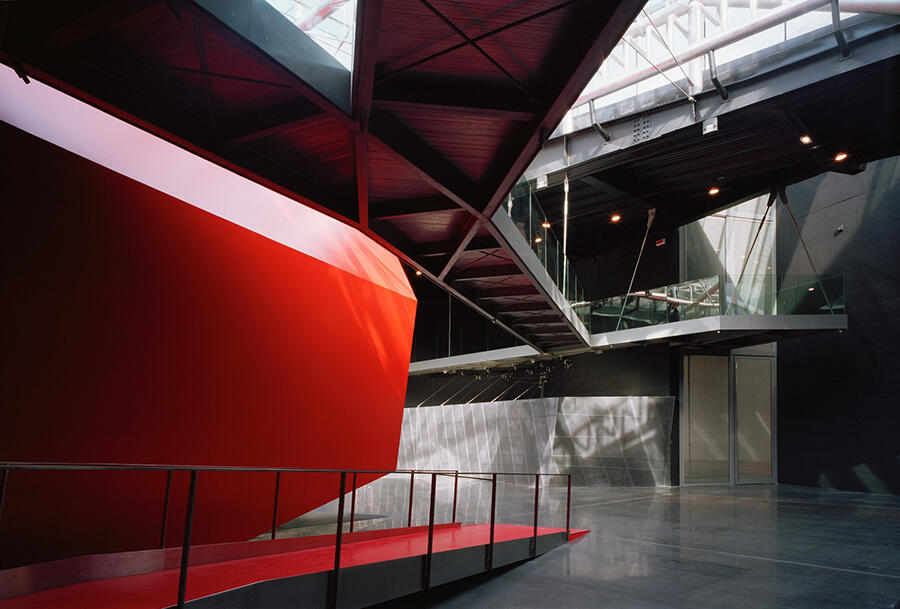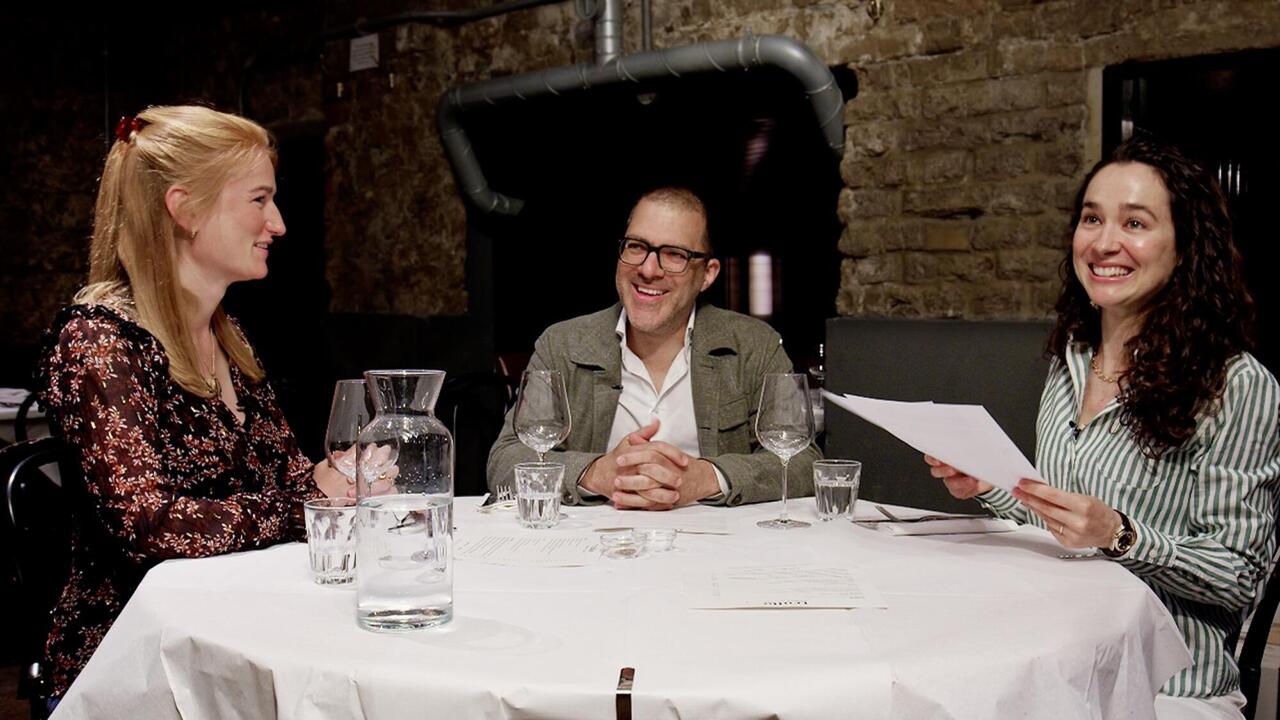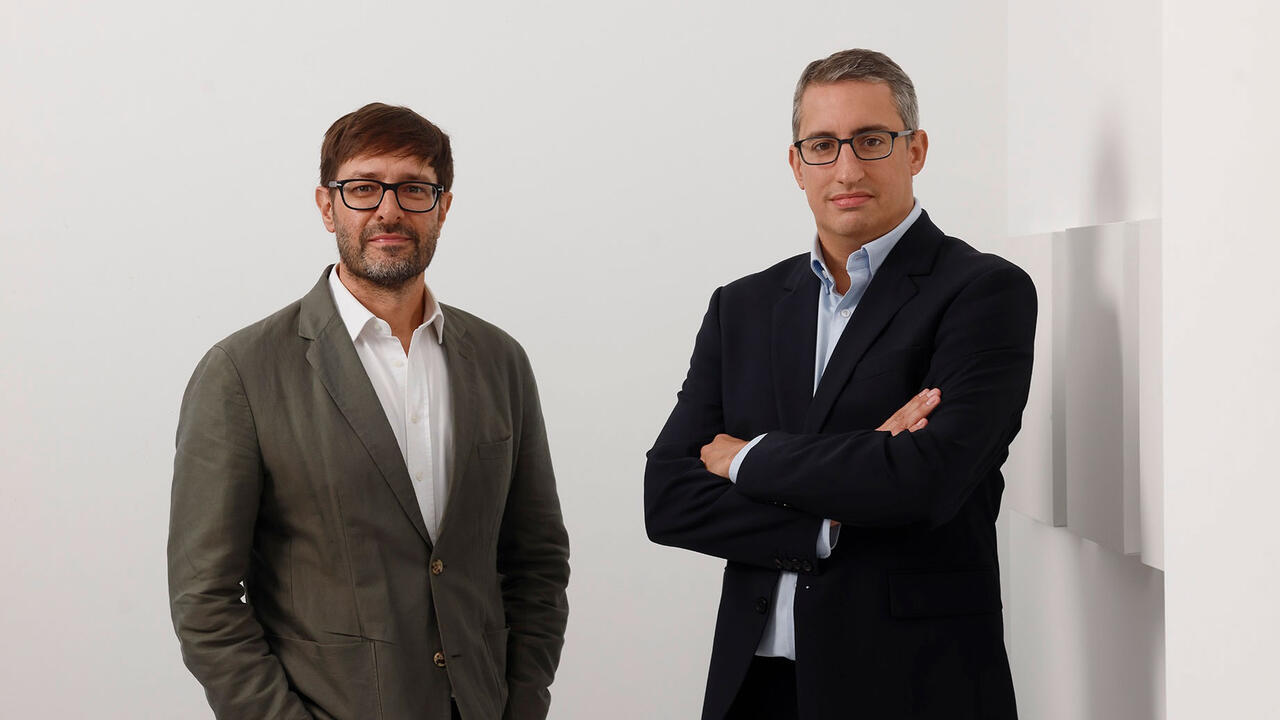Why Luca Lo Pinto Considers the Museum a Magazine
During his first years as MACRO's artistic director, Lo Pinto has initiated a series of projects that break free from the limits of institutions
During his first years as MACRO's artistic director, Lo Pinto has initiated a series of projects that break free from the limits of institutions

Carina Bukuts: When you became the artistic director of Rome’s MACRO, you created the ‘Museum for Preventive Imagination’, a three-year-long programme which aims to experiment with alternative formats of exhibition-making. How did you come up with this programme?
Luca Lo Pinto: MACRO is a very particular museum consisting of two different architectural bodies. The older part is the former Peroni beer factory. When it opened at the end of the 1990s, this space used to accommodate part of the collection of the municipality of Rome, so it was originally called Galleria Comunale di Arte Moderna. The city soon realised that the space of the former factory was not big enough and built a new wing designed by Odile Decq in 2010. With the museum strictly being linked to the municipality, I was aware that the budget – considering the scale of the museum – was very limited and my initial contract was only three years, so I had quite a few limitations to work with. I thought if I ran this museum in a conventional way, it would be a failure from day one. I wanted to draft something in response to the museum’s position in the city, in Italy and on an international level. I came up with the idea of transforming the museum itself into a singular durational exhibition project imagining it as a three-dimensional magazine.

CB: When you were appointed the artistic director of MACRO, one of the first things I read was that you were trying to reconfigure the museum as a magazine. What can the museum learn from a magazine?
LLP: My main interest has always been trying to question the medium of exhibition-making and with that affecting what is considered an artwork or how artists can work within the framework of an institution. The first idea with MACRO was to turn the museum into an exhibition constantly in motion that would last three years. That might seem like a long show but if you run a museum for three years, you just understand how the machine works.
The idea of the magazine came by reflecting on the architecture. In the old wing, you have many similar-sized rooms, so I immediately thought about this idea of fragmentation and adding sections. It was important to find a way to create unity while also being aware that you cannot dismantle the structure of the place. I thought that the magazine could be an interesting tool to respond to that. Each room is a section, a column responding to a precise idea or format. I also wanted to find a model that could be a bit more horizontal, which responds to the artists’ attitudes and not vice versa. Contrary to the common understanding, the museum is a space of constraint rather than of freedom. I’m interested in interrogating the authoritarian voice of the institution through a process of deconstructing its predefined structures.

CB: So, your way of conceiving exhibitions is more inspired by artists than, let’s say, by the work of other museums. You are rather considering which artistic practice requires what kind of space and recourses, right?
LLP: Yes, but we also ask artists to respond to certain formats. With the ‘Solo/Multi’ format, for instance, we invite artists to do a solo show but we also encourage them to think outside of the box and consider the exhibition as an artwork in its own right.
CB: That concept becomes very apparent when looking at Nathalie Du Pasquier’s ‘Campo Di Marte’ [2020], where the individual pieces all seemed part of one bigger narrative and the boundaries between works were not that clear. It looked like one big mise-en-scène.
LLP: Natalie’s show featured more than 100 works, but, as you said, it was conceived like a big landscape made of different elements. In 2021, we presented ‘This isn’t Theory. This is History’, a Tony Cokes survey that worked with the idea of a score. There were four screens in the space, but no simultaneous projection and you were perceiving one work after another, which is an experience that is closer to the black box than a classical white cube.

CB: Cokes also created a series of billboards that was shown across Rome. Lawrence Weiner’s ‘TRACCE / TRACES’ [2020] was an exhibition which presented his works on aerial banners that were on view in summer at the Roman coastline. What’s your interest in public space?
LLP: When the pandemic started, we were glued to digital devices, so I thought it was important to reaffirm the relevance of the phenomenological aspect. I had this idea for the aerial banners for many years and was so happy he [Weiner] accepted the invitation so quickly, as we were able to get everything set up within three months. It all went pretty fast and, for me, this attitude is very anti-institutional. Normally, the museum works with long leading times.
It was important to me to introduce Tony’s work in Italy. Thinking about the context in Italy and his practice in general, we decided to expand the exhibition, translate some works into Italian and bring them outside. We didn’t want to use the billboards as advertising but as a medium. There was no information about the exhibition, so the works could also be perceived independently. But, of course, this is how conceptual artists work: any space can be used for art – be it a page in a book, a billboard or an aerial banner.
CB: This brings us back to the idea of the magazine as a medium.
LLP: Yes, you have different sections but the contents complement each other. If you visit MACRO now, you would first see a show by Jason Dodge, an exhibition on the influential and undervalued Italian poet Patrizia Vicinelli, an unorthodox survey of Salvo and then you have the sound room where you can listen to 55 records by the label Sublime Frequencies, followed by a group show with artists responding to the old technique of fore-edge painting, and a collaborative project by artists Anna-Sophie Berger and Teak Ramos. All these things are so different from each other. It’s like flipping through the pages of a magazine that combines cross-cutting contents juxtaposing imagery and mediums apparently distant.

CB: I can relate to that. You might buy an issue because you’re interested in a feature on one particular subject but once you have the magazine in your hand, there’s so much more you can discover. Especially with museums that charge admission, many visitors need to decide between two exhibitions and will then opt for the artist/topic they are most familiar with. The fact that the MACRO is free of charge, of course, gives you a different possibility to draw audiences into the museum. How do you understand its role in the current debate about accessibility?
LLP: Accessibility is about trying to make something available or to put the other in the condition of sharing something with you. The main challenge as an institution is to do it in a way without losing a certain complexity. That’s why accessibility really changes from case to case. I’m thinking a lot about the lack of education in Italy, for instance. If you want to study graphic design, music or the visual arts, it’s really left to you, there’s little support and educational infrastructure.
For me, accessibility means not only doing an exhibition that is in line with the programme, it’s also about giving people access to a different type of content in a way that can change or open their minds. However, there are also more practical aspects. For promoting the first show, ‘Editoriale’, we decided to have the title translated into the five most spoken languages in Italy. Rome is a city with many foreign communities, and reading something in your language is a way of creating empathy.
During the pandemic there’s been much talk about questioning the status quo – be it inclusivity or the environment. However, I feel that a lot of this is simply rhetoric, and that terms, such as ‘accessibility’, are an umbrella that people hide under. Being inclusive is not always to make things clearer but to really question and share experiences with others.
Main image: Portrait of Luca Lo Pinto, 2020. Courtesy: MACRO, Rome; photograph: Delfino Sisto Legnani























